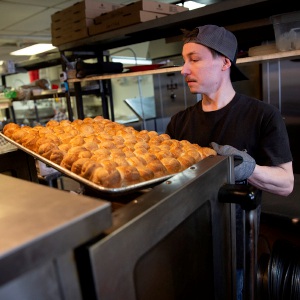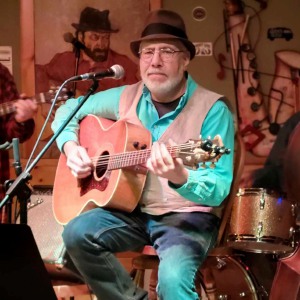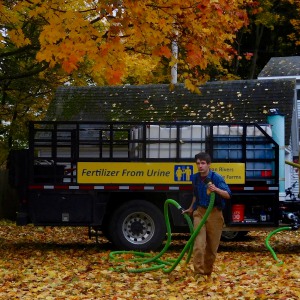A grouse by any other name
| Published: 10-21-2019 3:36 PM |
On spring evenings, just before dark, I used to hear a faint drumroll coming from somewhere off in the wooded hills. It sounded to me like an old tractor starting up, although it seemed like an odd time for a farmer to start work.
I later learned that it was the drumming of a ruffed grouse. Not a partridge; this was Connecticut. Years later I lived in Maine, where my husband took up bird hunting: not for grouse, but for “partridge.” They are the same bird, Bonasa umbellus.
Ruffed grouse is the most widespread upland game bird in North America — but what it’s called depends upon where you live. Mainers know it as partridge (or pa’tridge), as do folks in northern New York State and the Adirondacks, while in most other parts of the bird’s range it’s ruffed grouse. Early New England settlers called it a wood hen. Back then, the birds weren’t used to musket-wielding hunters. They were such easy quarry that some frugal hunters decided not to waste powder and shot. They snatched a fowl for dinner using a wire loop on a long pole.
Call it what you may (grouse, partridge or dinner), a grouse is not a partridge. Both are members of the pheasant family, along with the wild turkey and the more exotic ring-necked pheasant. True partridges are not native to the Northeast, though you might find a gray partridge (Perdix perdix), an introduced Eurasian species, in northern portions of the Champlain and Saint Lawrence river valleys.
The ruffed grouse is a thriving native game bird that ranges from Alaska to the northern Appalachians. There’s a red phase and gray phase, with the gray more common in Maine. One nickname I’ve encountered is “Old Ruff.” Paul Johnsgard, author of Grouse and Quails of North America, listed a dozen vernacular (and often misleading) names for Bonasa umbellus: birch partridge, drummer, drumming grouse, long-tailed grouse, pheasant, mountain pheasant, partridge, pine hen, tippet, white-flesher, willow grouse, wood grouse and woods pheasant. The spruce grouse (Falcipennis canadensis), found in the spruce-fir woods of northern New England and adjacent Canada, is far less numerous. Johnsgard lists a dozen names for this one, too, including (confusingly) black partridge, spruce partridge, cedar partridge, and swamp partridge.
What you call the bird comes down to tradition, said Dave Anderson, of the Society for the Protection of New Hampshire Forests. “I don’t ever want to be in an argument about which term for ruffed grouse is more correct. The answer is, ‘it depends.’ Which term did your grandfather teach you? My experience is that in most of rural Maine and parts of northern New Hampshire, most folks say ‘partridge.’ In southern New Hampshire and among college wildlife majors or the birding set, ‘ruffed grouse’ tends to prevail. The way I heard it was buying shotgun shells: ‘cartridges for partridges.’ But I also learned it as ‘ruffed grouse’ — a college-boy give-away.”
David O’Hearn, a hunter who grew up in New Hampshire’s Seacoast region, says, “Ruffed grouse were always referred to as partridge when the elders spoke. Urbanites tend to say grouse.”
Both grouse and partridge are favored names for names for lakes, ponds, mountains, islands, lanes, cabins, parks, restaurants and at least one city. At the end of a day’s bird hunting, you can pour yourself a snifter of Famous Grouse, a blended Scotch whisky — or its risqué spinoff, Naked Grouse. (No label on the bottle, just an embossed bonasa umbellus). In Hugh Laurie’s humorous novel The Gun Seller, the protagonist calls watered down Famous Grouse “Vaguely Familiar Grouse.”
Article continues after...
Yesterday's Most Read Articles
 Dartmouth administration faces fierce criticism over protest arrests
Dartmouth administration faces fierce criticism over protest arrests
 West Lebanon crash
West Lebanon crash
 Plan on track to ship Upper Valley mail to Connecticut for sorting
Plan on track to ship Upper Valley mail to Connecticut for sorting
 Lebanon’s Jewell back from auto accident, more aware of ‘drowsy driving’ dangers
Lebanon’s Jewell back from auto accident, more aware of ‘drowsy driving’ dangers
 Longtime employees buy West Lebanon pizzeria
Longtime employees buy West Lebanon pizzeria
Even Old Ruff’s genus name is interesting. It’s derived from the Latin bonus (good) and assum (roast). As a noun, grouse has been used since the 1500s, but its origin is unknown. As a verb, it was British army slang for complaining, and may be derived from old French terms for grumbling, and from Greek before that.
I occasionally see a ruffed grouse on woodland walks or on a stroll down my country road. On one walk, a bird suddenly burst from the roadside bushes and practically flew into my face. A protective instinct made me throw my hands in front of my face — which resulted in a streaming bloody nose. I’m the only person I know who has been punched in the nose by a grouse. And believe me: I groused about it.
<sbull value="sbull"><text xmlns="urn:schemas-teradp-com:gn4tera"></text></sbull>
Laurie D. Morrissey is a writer in Hopkinton, N.H. The illustration for this column was drawn by Adelaide Tyrol. The Outside Story is assigned and edited by Northern Woodlands magazine (www.northernwoodlands.org) and sponsored by the Wellborn Ecology Fund of the New Hampshire Charitable Foundation (wellborn@nhcf.org).

 Art Notes: Canaan Meetinghouse showcase brings musicians and listeners together
Art Notes: Canaan Meetinghouse showcase brings musicians and listeners together A Look Back: Upper Valley dining scene changes with the times
A Look Back: Upper Valley dining scene changes with the times The future of fertilizer? Pee, says this Brattleboro institute
The future of fertilizer? Pee, says this Brattleboro institute
